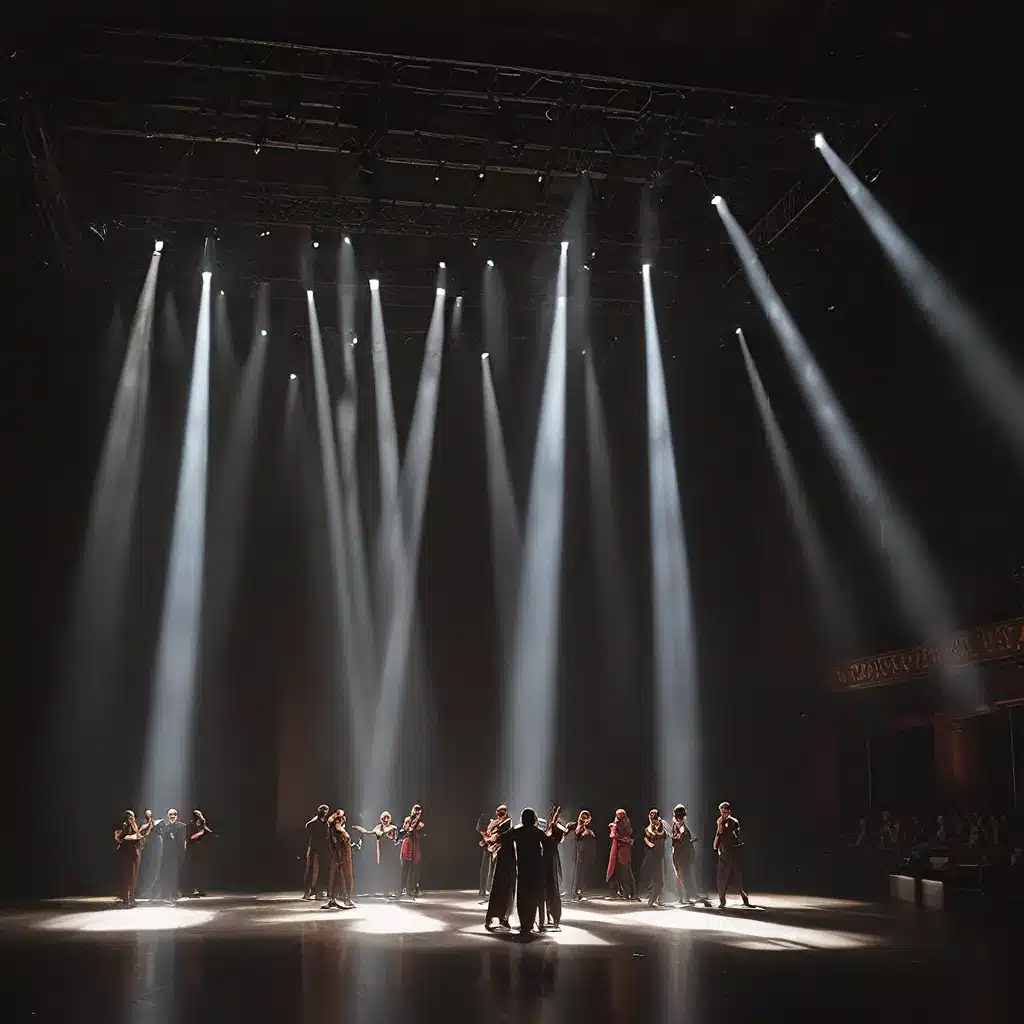
Bringing the Stage to Life with Light
As I step into the dimly lit theater, the anticipation builds. The house lights dim, and suddenly, the stage explodes with vibrant color and stunning illumination. It’s as if the performers have been waiting in the wings, ready to bask in the glow of the meticulously designed lighting that will bring their performance to life. This is the work of the theater lighting designer – the unsung hero who paints the canvas of the stage with light, transforming a simple set into a breathtaking visual masterpiece.
Stage lighting is an art form, a delicate balance of science and creativity. It’s the thread that weaves the entire production together, guiding the audience’s attention, setting the mood, and amplifying the emotional impact of every scene. As a lighting designer, I have the privilege of shaping the visual landscape, creating an immersive experience that transports the audience to another world.
The Lighting Designer’s Toolkit
The world of stage lighting is a veritable treasure trove of specialized equipment and techniques. From the powerful ellipsoidal reflector spotlights that cast a beam of light sharp enough to slice through the darkness, to the Fresnel lights that bathe the stage in a soft, even glow, each fixture has a unique purpose and role to play in the overall design.
The followspot, with its ability to track a performer’s every move, is a lighting designer’s secret weapon, allowing them to keep the audience’s focus firmly on the action. And who could forget the humble PAR can, a staple in any lighting rig, providing the essential washes of color that set the tone for each scene.
The Art of Lighting Design
But the true magic of stage lighting lies not just in the equipment, but in the way it is wielded by the lighting designer. It’s a delicate dance of color, texture, and intensity, each element carefully choreographed to enhance the story being told on stage.
Colored lighting can evoke a specific mood or emotion, transforming a scene from a vibrant, joyful celebration to a somber, introspective moment. The careful use of gobos and patterns can transport the audience to a different time and place, creating the illusion of a starry night sky or the stained glass windows of a cathedral.
And let’s not forget the importance of lighting the talent without blinding them. It’s a delicate balancing act, ensuring that the performers are bathed in a flattering glow while still maintaining the dramatic impact of the overall design.
The Lighting Designer’s Process
The process of creating a lighting design is a meticulous one, requiring a deep understanding of the production, the set, and the story being told. It all starts with the script, as the lighting designer pores over every line, every stage direction, and every character arc, looking for clues that will inform their design.
Once they’ve familiarized themselves with the production, the lighting designer will begin to divide the stage into independent lighting areas, each with its own unique color and intensity requirements. This is where the true artistry begins, as the designer experiments with different combinations of lights, textures, and angles to create the perfect look for each moment.
Of course, no lighting design is complete without the installation process, a carefully choreographed ballet of skilled technicians and riggers. As they hang the lights, run the cables, and ensure everything is in perfect working order, they’re laying the foundation for the magic that’s about to unfold on stage.
Collaborating for Brilliance
But the lighting designer’s work doesn’t happen in a vacuum. They’re part of a larger team of creatives, each with their own unique perspectives and talents, all coming together to bring a production to life. As lighting designer Jeff Ravitz points out, the relationship between the lighting designer and the director is a crucial one, with each offering valuable insights and feedback that shape the final design.
And let’s not forget the technical crew, the unsung heroes who ensure that every light, every cable, and every dimmer is in perfect working order. Without their expertise and dedication, the lighting designer’s vision would never see the light of day.
Illuminating the Stage, Igniting the Imagination
As I reflect on the power of stage lighting, I’m reminded of a quote from the legendary lighting designer, Abe Jacob, who once said, “Lighting is the most important element in any production. It’s the thing that makes the audience believe in the magic of the theater.”
And he’s absolutely right. The work of the theater lighting designer is not just about creating a beautiful visual landscape; it’s about tapping into the audience’s emotions, transport them to another time and place, and leaving them with a lasting impression that will stay with them long after the curtain has fallen.
So the next time you find yourself captivated by the spectacle unfolding on stage, take a moment to appreciate the unsung heroes behind the scenes – the lighting designers who are lighting the way, one brilliant beam at a time.

